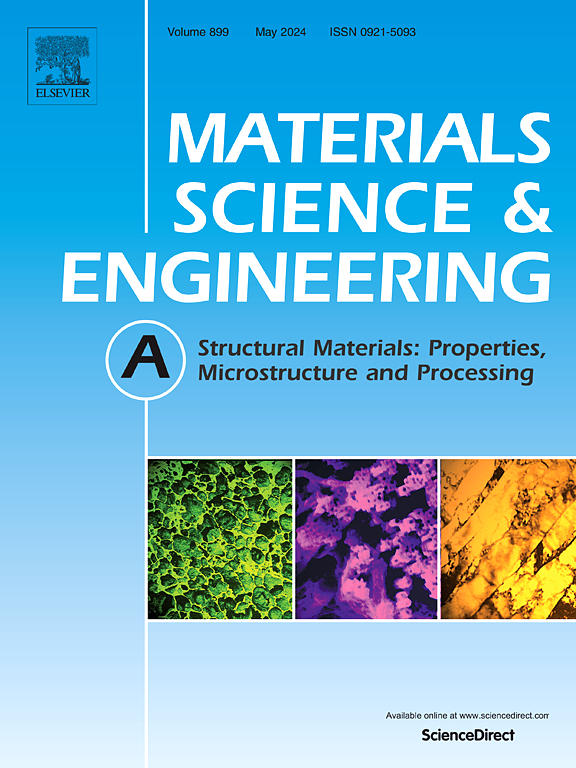Additive manufacturing of continuous network structures by in-situ synthesis of TiB+TiC/Ti6Al4V composite powders
IF 6.1
2区 材料科学
Q1 MATERIALS SCIENCE, MULTIDISCIPLINARY
引用次数: 0
Abstract
Laser melting deposition technology exhibits significant potential in manufacturing titanium matrix composite parts with complex shapes. However, the convenient and efficient introduction of reinforcements has become a challenging task. Hence, based on the principle of in-situ reaction and the idea of combining pre-alloyed powder preparation, the reinforcing phase is embedded in the alloy powder, and TiB + TiC/Ti64 composite with a three-dimensional quasi-continuous network structure distribution of the reinforcement phase is prepared by laser melting deposition. Achieving the columnar to equiaxed grains transformation of the laser additive manufacturing titanium alloy while improving the strength of the matrix. The results indicate that in-situ TiB and TiC have a positive influence on the equiaxed transformation and grain refinement of primary β-Ti grains and α grains. They also facilitate the precipitation of α-Ti with non-Burgers orientation relationships and reduce the texture strength of α-Ti. This study achieved an ultimate tensile strength of 1109 MPa with acceptable ductility, the grain refinement played a pivotal role in enhancing the strength of titanium matrix composites. Consequently, this study offered a novel approach for the structural design of additive manufactured composite materials using powder as a raw material.
原位合成TiB+TiC/Ti6Al4V复合粉末增材制造连续网状结构
激光熔化沉积技术在制造形状复杂的钛基复合材料零件方面显示出巨大的潜力。然而,方便、高效地引入增援已成为一项具有挑战性的任务。因此,基于原位反应原理,结合预合金粉末制备的思路,将增强相埋入合金粉末中,采用激光熔化沉积法制备了具有增强相三维准连续网状结构分布的TiB + TiC/Ti64复合材料。在提高基体强度的同时,实现了激光增材制造钛合金的柱状晶粒向等轴晶粒的转变。结果表明,原位TiB和TiC对初生β-Ti晶粒和α晶粒的等轴转变和晶粒细化有积极影响。它们还促进了非burgers取向α-Ti的析出,降低了α-Ti的织构强度。该材料的抗拉强度达到1109 MPa,且具有良好的塑性,晶粒细化对提高钛基复合材料的强度起着关键作用。因此,本研究为以粉末为原料的增材制造复合材料的结构设计提供了一种新的方法。
本文章由计算机程序翻译,如有差异,请以英文原文为准。
求助全文
约1分钟内获得全文
求助全文
来源期刊

Materials Science and Engineering: A
工程技术-材料科学:综合
CiteScore
11.50
自引率
15.60%
发文量
1811
审稿时长
31 days
期刊介绍:
Materials Science and Engineering A provides an international medium for the publication of theoretical and experimental studies related to the load-bearing capacity of materials as influenced by their basic properties, processing history, microstructure and operating environment. Appropriate submissions to Materials Science and Engineering A should include scientific and/or engineering factors which affect the microstructure - strength relationships of materials and report the changes to mechanical behavior.
 求助内容:
求助内容: 应助结果提醒方式:
应助结果提醒方式:


